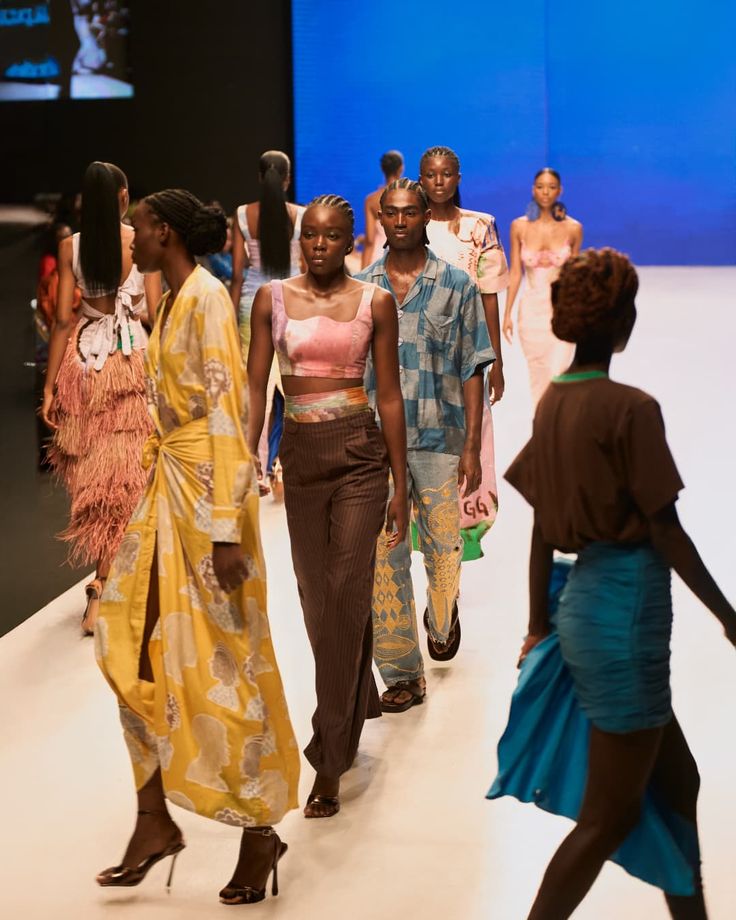For many young designers, Lagos Fashion Week feels like a dream too far away, something reserved for the big names who already have fashion houses, international press mentions, and celebrity clients. But if you look closer, every single brand that ever graced that runway once stood where you stand now: with an idea, a sketchbook full of hopes, and a burning question: how do I get there? Lagos Fashion Week isn’t just a calendar event; it’s Africa’s biggest fashion platform and one of the most important industry gatherings globally. Every October in Lagos, editors, buyers, stylists, celebrities, and culture-makers sit in the front row. If your collection appears there, it’s more than a show, it’s a declaration. But the runway doesn’t just open up; there’s a process, and knowing that process is what separates dreamers from doers.
The first step is understanding who runs the show. Lagos Fashion Week is organized by Style House Files, founded by Omoyemi Akerele. They are the gatekeepers. Every application, every approval, every invite that lands in an editor’s inbox goes through them. If you want to show, you must study their platform, know their timelines, and align with their mission, creativity, sustainability, and elevating African craftsmanship. The organizers don’t just accept anyone who makes clothes. They’re looking for designers who have a cohesive brand identity and a clear design point of view, who are already in business with some form of market presence, who can present a collection of at least 12–15 looks that tell a story, and who show a commitment to sustainability and ethical practices. Think of it this way: Lagos Fashion Week isn’t the place to test if you’re ready. It’s the place to prove to the world that you are.
There are also different ways to enter the calendar. Not every designer at LFW shows in the same format. Some go for the main runway shows the official slots that come with prestige and high visibility. Others participate through Green Access, a program designed for emerging designers with a focus on sustainability and circular fashion. There are also presentations, pop-ups, and exhibitions that allow designers to showcase their collections in more intimate ways. And then there’s the digital showcase option, which allows designers to present films or virtual runways, giving them global reach at lower costs. Each route has its price tag, its benefits, and its expectations.
Applications usually open months in advance, and designers are required to submit a portfolio that includes their brand profile, past lookbooks or collections, and press clippings if available. You’ll also need to provide evidence that your collection is production-ready. In many cases, Lagos Fashion Week also asks for a sustainability statement outlining how your brand sources fabrics or works with artisans, because sustainability is not just a theme, it’s a core pillar of the platform. And then comes the big question of money. Showing at Lagos Fashion Week is not free. Costs vary depending on the format you choose. A full runway show involves expenses for production, models, styling, and logistics. Presentations and exhibitions are more affordable, and the Green Access program provides opportunities at reduced costs for emerging designers. Many young designers also seek sponsorships or brand collaborations to cover expenses. Planning ahead is essential, because Lagos Fashion Week is as much about strategy as it is about style.
Once accepted, your work goes far beyond designing clothes. You’ll need to think about models, fittings, styling, music, and even the story your runway presentation will tell. Lagos Fashion Week is theatre, and every detail matters. PR and media are equally critical. How will people hear about your show? How will buyers connect with you afterward? Many designers work with PR agencies or rely on strong digital campaigns to maximize their moment on the runway. And once the show ends, the real work begins again following up with buyers, engaging with press, and keeping momentum alive on social media. The runway is not an endpoint; it’s a launchpad.
The factual truth is not every designer will make it to Lagos Fashion Week, and that’s okay. But even aiming for it changes how you see your brand. It forces you to structure your business, refine your storytelling, and align with global standards. For African designers, this moment is even more significant. It’s not just about visibility; it’s about showing the world that African design belongs at the center of global fashion conversations. We’ve seen Kenneth Ize, Orange Culture, and Lisa Folawiyo use Lagos Fashion Week as a springboard to international recognition. Why not you next? The road to Lagos Fashion Week isn’t easy. It’s filled with deadlines, rejections, budgets that stretch you thin, and sleepless nights spent stitching dreams into fabric. But for those who make it, the reward is unforgettable: the moment your name is called, the lights come up, and your collection walks into history. Because at the heart of it, Lagos Fashion Week isn’t just about clothes. It’s about courage, the courage to put your vision on the runway and say, this is me, this is us, this is the future of African fashion.




Comments